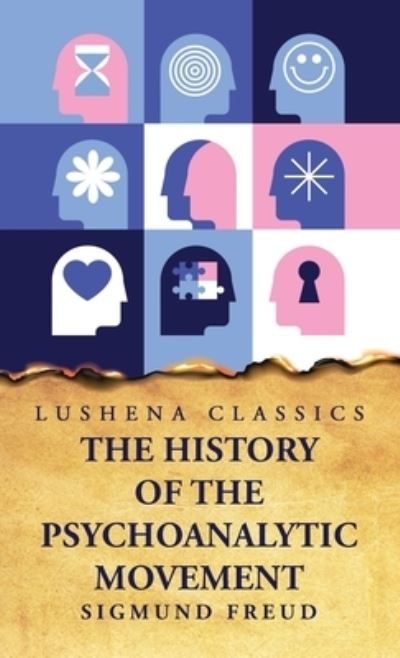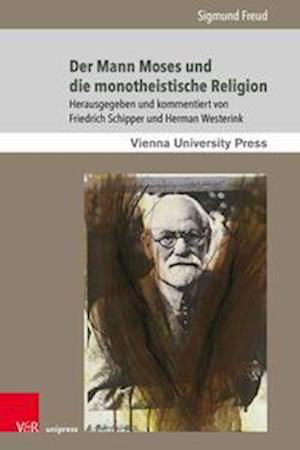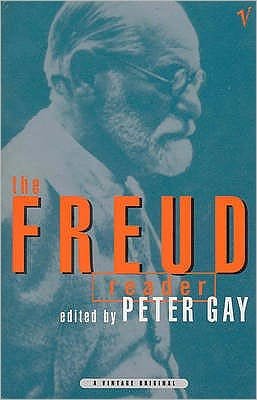
Vertel uw vrienden over dit artikel:
Group Psychology and the Analysis of the Ego (annotated)
Sigmund Freud
Besteld in een afgelegen magazijn
Ook verkrijgbaar als:
-
Paperback Book1e uitgave(2014) Íkr 1.917,31
- Paperback Book (2015) Íkr 2.069,91
- Paperback Book (2012) Íkr 2.309,71
- Paperback Book (2018) Íkr 2.309,71
- Paperback Book (2018) Íkr 2.505,91
- Paperback Book (2020) Íkr 3.159,91
- Hardcover Book (2018) Íkr 3.770,31
- Hardcover Book (1921) Íkr 3.803,01
- Paperback Book (2014) Íkr 4.053,71
- Book (2023) Íkr 4.598,71
- Paperback Book (2019) Íkr 5.732,31
Group Psychology and the Analysis of the Ego (annotated)
Sigmund Freud
Group Psychology and the Analysis of the Ego (German: Massenpsychologie und Ich-Analyse) is a work of Sigmund Freud from the year 1921. In this monograph, Freud describes psychological mechanisms at work within mass movements. A mass, according to Freud, is a "temporary entity, consisting of heterogeneous elements that have joined together for a moment."[1] He refers heavily to the writings of sociologist and psychologist Gustave Le Bon (1841-1931), summarizing his work at the beginning of the book in the chapter Le Bons Schilderung der Massenseele ("Le Bon's description of the group mind"). Like Le Bon, Freud says that as part of the mass, the individual acquires a sense of infinite power which allows him to act on impulses that he would otherwise have to curb as an isolated individual. These feelings of power and security allow the individual not only to act as part of the mass, but also to feel safety in numbers. This is accompanied, however, by a loss of conscious personality and a tendency of the individual to be infected by any emotion within the mass, and to amplify the emotion, in turn, by "mutual induction". Overall, the mass is "impulsive, changeable, and irritable. It is controlled almost exclusively by the unconscious."[2] Freud distinguishes between two types of masses. One is the short-lived kind, characterized by a rapidly transient interest, such as trends. The other kind consists of more permanent and enduring masses, which are highly organized, such as the Church or the military. "The masses of the former type, so to speak, ride on the latter, like the short but high waves on the long swell of the sea." However, the same basic mental processes operate in both kinds of masses. Freud refers back to his theory of instincts and believes that masses are held together by libidinal bonds. Each individual in the mass acts on impulses of love that are diverted from their original objectives. They pursue no direct sexual goal, but "do not therefore work less vigorously. Freud initially called the (largely unconscious) identification with the other individuals of the mass, all of whom are drawn in the same way to the leader, a binding element. The ego perceives a significant similarity with others in the group and identifies with them. In addition, admiration and idealization of the leader of the group takes place through the process of idealization. The narcissistic libido is displaced to the object which is "loved because of its perfection which the individual has sought for his own ego".[6][7] Also, a process of identification with the aggressor can take place, for example, as happens in regression. Thus, Freud came to the conclusion: "A primary mass is a number of individuals who have put one and the same object in place of their ego ideal and consequently identify with each other.
| Media | Boeken Paperback Book (Boek met zachte kaft en gelijmde rug) |
| Vrijgegeven | 13 november 2015 |
| ISBN13 | 9781519288301 |
| Uitgevers | Createspace Independent Publishing Platf |
| Pagina's | 104 |
| Afmetingen | 152 × 229 × 6 mm · 149 g |
| Taal en grammatica | Engels |
Meer door Sigmund Freud
Anderen hebben ook gekocht
Bekijk alles van Sigmund Freud ( bijv. Paperback Book , Book , Hardcover Book , Sewn Spine Book en CD )







![Cover for Sigmund Freud · Hverdagslivets psykopatologi (Sewn Spine Book) [1e uitgave] (2024)](https://imusic.b-cdn.net/images/item/original/506/9788711833506.jpg?sigmund-freud-2024-hverdagslivets-psykopatologi-sewn-spine-book&class=scaled&v=1506001638)




![Cover for Sigmund Freud · Psychopathologie de la vie quotidienne: Livre audi (Book) [Digipack] (2024)](https://imusic.b-cdn.net/images/item/original/984/9782356414984.jpg?sigmund-freud-2024-psychopathologie-de-la-vie-quotidienne-livre-audi-book&class=scaled&v=1547061799)


















![Cover for Sigmund Freud · Klassikere: Kærlighedslivets psykologi. En illusions fremtid (Sewn Spine Book) [2e uitgave] (2023)](https://imusic.b-cdn.net/images/item/original/608/9788702401608.jpg?sigmund-freud-2023-klassikere-kaerlighedslivets-psykologi-en-illusions-fremtid-sewn-spine-book&class=scaled&v=1676490063)



![Cover for Carol J. Clover · Men, Women, and Chain Saws: Gender in the Modern Horror Film - Updated Edition - Princeton Classics (Paperback Book) [Updated edition] (2015)](https://imusic.b-cdn.net/images/item/original/292/9780691166292.jpg?carol-j-clover-2015-men-women-and-chain-saws-gender-in-the-modern-horror-film-updated-edition-princeton-classics-paperback-book&class=scaled&v=1512986150)
![Cover for Paul Auster · The New York Trilogy: Faber Modern Classics (Paperback Book) [Main - Faber Modern Classics edition] (2015)](https://imusic.b-cdn.net/images/item/original/800/9780571322800.jpg?paul-auster-2015-the-new-york-trilogy-faber-modern-classics-paperback-book&class=scaled&v=1458467501)
![Cover for Paulo Freire · Pedagogy of the Oppressed - Penguin Modern Classics (Paperback Book) [Reissue edition] (2017)](https://imusic.b-cdn.net/images/item/original/111/9780241301111.jpg?paulo-freire-2017-pedagogy-of-the-oppressed-penguin-modern-classics-paperback-book&class=scaled&v=1496010927)
![Cover for Peter Sloterdijk · Klassikere: Kritik af den kyniske fornuft (Sewn Spine Book) [2e uitgave] (2021)](https://imusic.b-cdn.net/images/item/original/636/9788741278636.jpg?peter-sloterdijk-2021-klassikere-kritik-af-den-kyniske-fornuft-sewn-spine-book&class=scaled&v=1637988840)

![Cover for Yuval Noah Harari · Nexus (Bound Book) [1e uitgave] (2024)](https://imusic.b-cdn.net/images/item/original/833/9788727163833.jpg?yuval-noah-harari-2024-nexus-bound-book&class=scaled&v=1706872294)
![Cover for Bjarne Jacobsen · Eksistentiel psykologi (Sewn Spine Book) [1e uitgave] (2012)](https://imusic.b-cdn.net/images/item/original/804/9788759315804.jpg?bjarne-jacobsen-2012-eksistentiel-psykologi-sewn-spine-book&class=scaled&v=1348092502)

![Cover for Frédéric Gros · Gå! (Sewn Spine Book) [1e uitgave] [Indbundet] (2015)](https://imusic.b-cdn.net/images/item/original/098/9788774672098.jpg?frederic-gros-2015-gaa-sewn-spine-book&class=scaled&v=1431037653)

![Cover for David Graeber · Debt: The First 5,000 Years, Updated and Expanded (Paperback Book) [2 Revised edition] (2014)](https://imusic.b-cdn.net/images/item/original/196/9781612194196.jpg?david-graeber-2014-debt-the-first-5-000-years-updated-and-expanded-paperback-book&class=scaled&v=1414474350)





![Cover for Peter Nielsen · Med fortællingen går jeg i døden (Sewn Spine Book) [1e uitgave] (2021)](https://imusic.b-cdn.net/images/item/original/410/9788793772410.jpg?peter-nielsen-2021-med-fortaellingen-gaar-jeg-i-doeden-sewn-spine-book&class=scaled&v=1614026718)